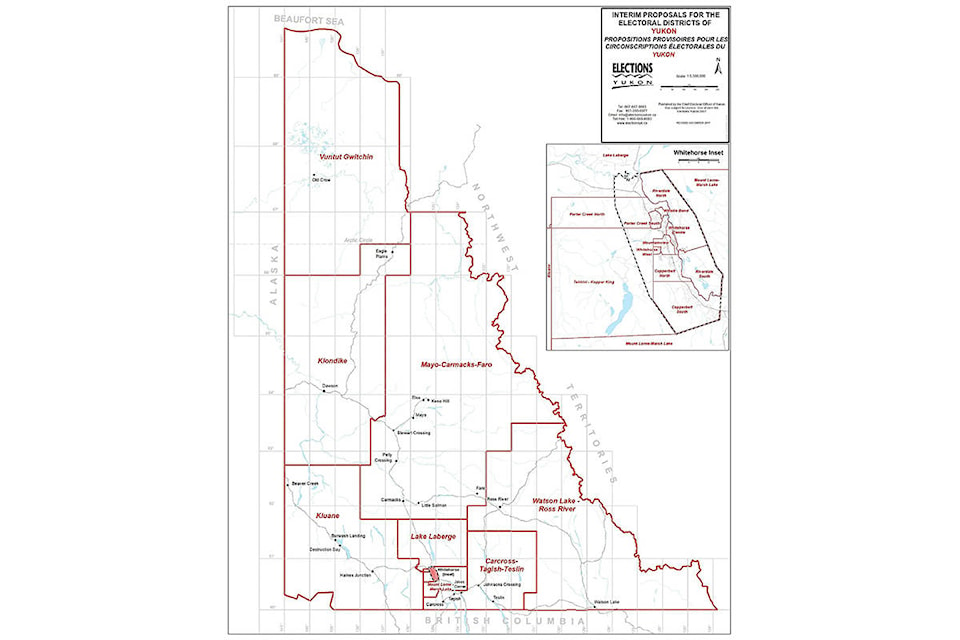The territory’s electoral boundaries commission is recommending the government create a new riding for Whistle Bend in time for the next election.
Under the new map proposed in the commission’s interim report, the total number of MLAs in the Yukon would stay at 19 but there would be major changes to some ridings, including Pelly-Nisutlin and Porter Creek Centre.
If the Yukon Legislative Assembly approves the plan, Pelly-Nisutlin would be no more.
Chief electoral officer Lori McKee said concerns about the Pelly-Nisutlin had to do in part with its size. The riding currently includes the communities of Teslin, Faro and Ross River.
“It contained a number of very diverse communities, areas that didn’t share a community interest or travel patterns,” McKee said. “And certainly the geography and the distance were raised as issues.”
Similar concerns were raised during the 2007-08 review of electoral districts, she said.
Under the new map, three newly-named ridings would be created.
Carcross-Tagish-Teslin would combine the southern portions of the existing Mount Lorne-Southern Lakes and Pelly-Nisutlin ridings. The new riding would include Carcross, Tagish, Teslin, and Johnson’s Crossing.
The Mayo-Carmacks-Faro riding would combine the existing electoral district of Mayo-Tatchun with the communities of Faro and Little Salmon.
The proposed riding would include Carmacks, Elsa, Faro, Keno Hill, Little Salmon, Mayo, Pelly Crossing, and Stewart Crossing.
It would become the largest riding in the territory with a geographic area of more than 133,000 square kilometres.
The current Watson Lake riding would be combined with the community of Ross River.
The district would also include Rancheria, Swift River and Upper Liard.
The other major proposed change is the suggestion to create a new riding for Whistle Bend.
Under the plan, parts of Whistle Bend will be absorbed into new boundaries for Porter Creek North, while the rest will get a riding of its own.
That’s to accommodate the significant growth that is expected, McKee said.
These changes will be in place for the next two elections. Electoral boundaries must be reviewed after every two elections, which means the new ridings could last until 2026. During that time the population of Whistle Bend is expected to grow, she said.
“By that date, the electoral population is expected to exceed 2,100. There is just exponential growth planned for Whistle Bend.”
Smaller changes are also being proposed to other ridings.
A full breakdown of all the proposed changes as well as a copy of the commission’s interim report is available online at yukonboundaries.ca
The public can comment in writing on the report until March 10, 2018.
Public meetings will take place in February and March. Anyone who is interested in making a presentation is asked to contact the commission’s office by Jan. 11.
A full schedule of public meetings will be released in the new year based on the level of public interest.
The commission will release its final recommendations to the Yukon Legislative Assembly by April 20.
Commissions are formed after every other election to look at the way ridings are divided up.
This commission is chaired by Chief Justice Ron Veale. Each political party with seats in the legislative assembly appoints one representative. McKee is the fifth member.
Contact Ashley Joannou at ashleyj@yukon-news.com
